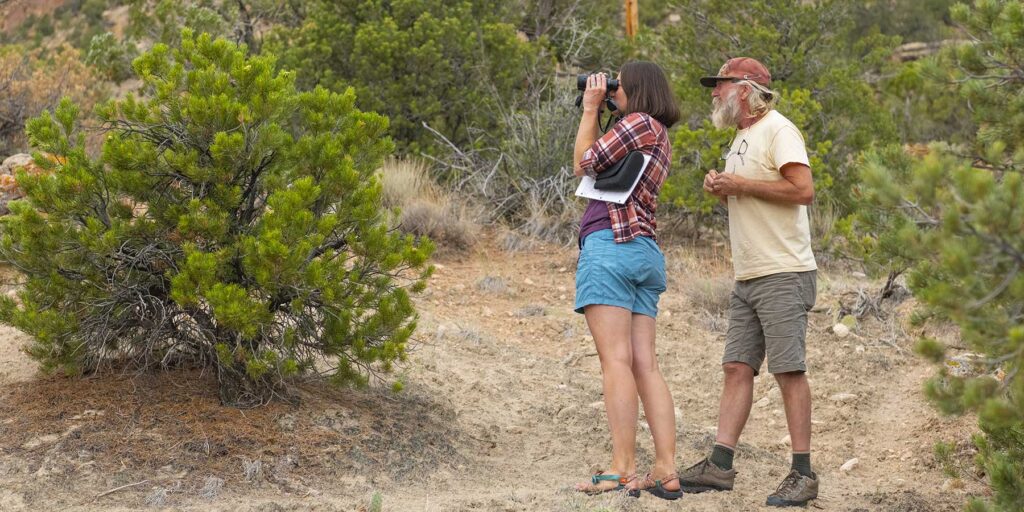Grab your binoculars and help us spot pinyon jays!
This is an independent community science project. You do the training, then you choose where, when, and how many hours you want to contribute.
We’re looking for volunteers to help gather information about pinyon jays to inform sound management of pinyon and juniper forests in Grand Staircase-Escalante National Monument and elsewhere throughout the Colorado Plateau.
Read about how we used pinyon jay data to help protect over 30,000 acres of forest in Grand Staircase-Escalante National Monument in 2019
Location Arizona, Colorado, New Mexico, Utah
Contact volunteernow@grandcanyontrust.org
Open to Anyone
Topics Forest Ecology, Habitat Restoration
Sign up for the pinyon jay project
Volunteer on your own time. Look and listen for pinyon jays while you’re hiking, and record observations with a phone app.- Location: Grand Staircase-Escalante National Monument, or any pinyon and juniper forest on the Colorado Plateau.
- Commitment: Collect data autonomously on at least four separate occasions (this can be done anytime throughout the year).
- Requirements: Smartphone, willingness to hike, and completion of our online training course.
Project background
Pinyon jays — blue birds about the size of robins — live in pinyon and juniper forests across the Colorado Plateau. The birds and the trees are mutually dependent on one another: pinyon pines provide pinyon jays with food, and pinyon jays help pinyon pines spread their seeds. Both are facing unprecedented threats.
The pinyon jay population has shrunk by an estimated 85 percent since 1970, and the remaining population is expected to experience further declines in the next 50 years. Researchers believe a major reason for the decline is habitat loss. Across public lands in the West, federal agencies are proposing large-scale destruction of pinyon and juniper forests. After machines chew up the trees, the agencies often plant non-native grasses, which are a favorite of livestock.
How your data will help protect pinyon jays

The U.S. Fish and Wildlife Service’s conservation strategy for the pinyon jay recommends a 500 meter buffer of undisturbed habitat around known breeding colonies. If we can document where pinyon jays and pinyon jay breeding colonies live, we can advocate to stop large-scale clear-cutting projects and discourage tree removal in areas full of pinyon jays.
Pinyon jays are amazing birds
- Pinyon jays are equipped with a special throat pouch that can hold about 50 seeds at once.
- They can cache (hide in the ground) more than 20,000 seeds a year. Excellent spatial memory helps them find buried seeds. The seeds they don’t locate become next year’s trees.
- They travel in flocks of 50-500.
Fun facts about pinyon and juniper forests

- Pinyon and juniper forests are well adapted to the Colorado Plateau’s dry climate and dramatic temperature swings.
- Pinyon pines produce seeds every 3-7 years (once mature). Pinyon jays move from one stand to another to find the most plentiful food sources.
- Pinyon pines don’t start producing robust seed numbers until they are 25-35 years old.
- Pinyon pine seeds are not only an important food source for pinyon jays – the buttery gems have been a staple of Native peoples for thousands of years.

